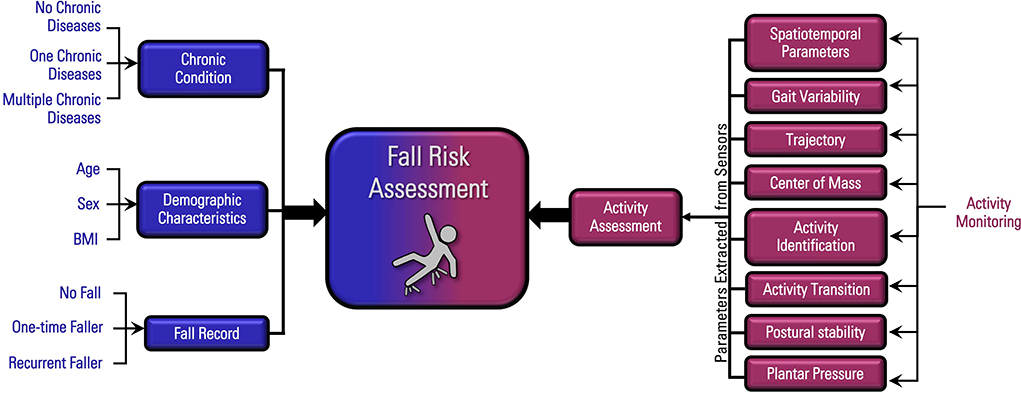Not known Facts About Dementia Fall Risk
9 Easy Facts About Dementia Fall Risk Explained
Table of ContentsAbout Dementia Fall RiskThe Dementia Fall Risk DiariesThe Main Principles Of Dementia Fall Risk The Definitive Guide for Dementia Fall Risk
An autumn threat evaluation checks to see just how likely it is that you will fall. It is primarily done for older grownups. The assessment normally consists of: This consists of a series of concerns regarding your general wellness and if you have actually had previous drops or troubles with balance, standing, and/or walking. These tools examine your strength, balance, and gait (the method you walk).Treatments are referrals that may reduce your risk of falling. STEADI consists of 3 actions: you for your danger of falling for your threat aspects that can be enhanced to try to avoid falls (for instance, balance issues, impaired vision) to lower your danger of falling by making use of efficient strategies (for example, providing education and learning and resources), you may be asked numerous concerns including: Have you dropped in the past year? Are you stressed regarding falling?
If it takes you 12 secs or more, it may indicate you are at higher threat for a fall. This examination checks strength and equilibrium.
Move one foot halfway forward, so the instep is touching the big toe of your other foot. Move one foot completely in front of the various other, so the toes are touching the heel of your various other foot.
What Does Dementia Fall Risk Do?
Many falls happen as an outcome of several adding factors; for that reason, taking care of the danger of dropping starts with identifying the factors that contribute to fall danger - Dementia Fall Risk. Some of one of the most relevant danger variables include: Background of previous fallsChronic clinical conditionsAcute illnessImpaired gait and balance, lower extremity weaknessCognitive impairmentChanges in visionCertain risky medications and polypharmacyEnvironmental variables can additionally boost the threat for drops, including: Poor lightingUneven or damaged flooringWet or unsafe floorsMissing or harmed handrails and grab barsDamaged or incorrectly fitted tools, such as beds, mobility devices, or walkersImproper usage of assistive devicesInadequate guidance of individuals residing in the NF, including those that show hostile behaviorsA effective fall threat monitoring program calls for a thorough professional assessment, with input from all participants of the interdisciplinary group

The care strategy should additionally consist of interventions that are system-based, such as those that promote a risk-free atmosphere (ideal illumination, hand rails, order bars, etc). The efficiency of the interventions need to be examined occasionally, and the treatment strategy modified as necessary to show changes in the autumn risk evaluation. Executing an autumn danger monitoring system utilizing evidence-based finest technique can lower the occurrence of falls in the NF, while restricting the possibility for fall-related injuries.
The Buzz on Dementia Fall Risk
The AGS/BGS guideline advises evaluating all adults matured 65 years and older for loss threat annually. This testing consists of asking clients whether they have actually fallen 2 or more times in the past year or sought clinical attention for an autumn, or, if they have actually not fallen, whether they feel unsteady when strolling.
People that have fallen once without injury ought to have their equilibrium and gait reviewed; those with stride or balance irregularities ought to obtain additional assessment. A history of 1 fall without injury and without stride or equilibrium troubles does not necessitate additional evaluation beyond continued annual loss threat screening. Dementia Fall Risk. A fall risk analysis is called for as part of the Welcome to Medicare assessment

Dementia Fall Risk Fundamentals Explained
Recording a drops background is just one of the top quality indicators for autumn avoidance and monitoring. An important component of threat evaluation is a medicine testimonial. Several courses of drugs raise fall danger (Table 2). copyright medications in certain are independent forecasters of falls. These medications tend to be sedating, change the sensorium, and hinder equilibrium and stride.
Postural hypotension can often be reduced by lowering the dose of blood pressurelowering drugs and/or quiting medications that have orthostatic hypotension as a side impact. Use above-the-knee support hose pipe advice and resting with the head of the bed boosted might likewise lower postural reductions in high blood pressure. The recommended elements of a fall-focused checkup are displayed in Box 1.

A TUG time better than or equal to 12 secs suggests high fall danger. Being unable to stand up from a chair of knee elevation without utilizing one's arms indicates enhanced fall threat.